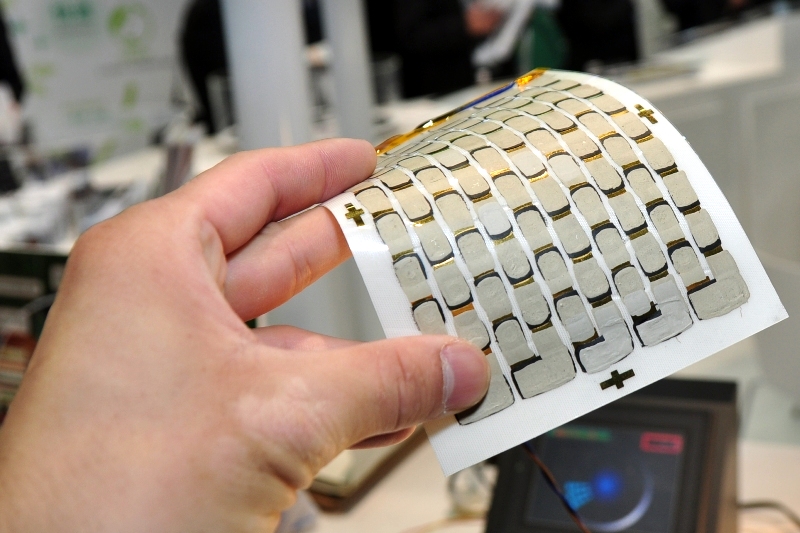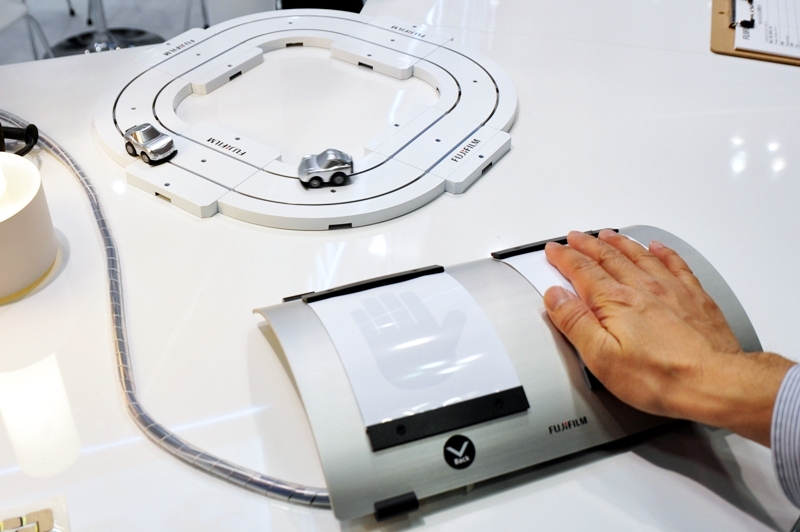Well-known photographic film maker Fujifilm used Nanotech 2013 as grounds to demonstrate a thermoelectric material so sensitive it can convert a temperature difference of just 1-degree-celsius to several milliwatts of electricity.

Fujifilm’s organic polymer-based thermoelectric converter module.
During the demonstration, a Fujifilm representative pressed their hand against a device that powered a toy car around a circular track. According to the company, the material used to power the car is the most efficient source of thermoelectricity ever developed.

Car track module used in Fujifilm’s demonstration of their new thermoelectric material.
Thermoelectric material uses the temperature difference between two substances to power a device. For instance, during the demonstration, the source of temperature difference was found between the human hand and the material. Within the thermoelectric material itself, an electric charge is created by drawing from the temperature gradient, as it is here that the change in temperature causes the material’s charge carriers to diffuse when moving from the warm side to the cooler side.
Electrons gathered are enough to power a small device or otherwise be sent to a battery for storage.
Along with breaking the record for efficient thermoelectric conversion, it should be noted that Fujifilm’s new material is also an organic conductive polymer; that is, it can be manufactured using a printing process. This means it can easily be produced in many different sizes. What’s more, because the material’s bendable, it can be wrapped around appliances, making it suitable for skin applications like a power generator for medical devices.
The other thing the company pointed out about the new technology is that it can also be used with solar cells to make them more efficient, though they stopped short of getting into the specifics of how this material would actually be made.
Fujifilm expects their thermoelectric film to eventually be developed into a design that can be comfortably attached to the human body and used as a power supply for the various devices that users carry around with them throughout the day.
Story via: techon.nikkeibp.co.jp
Advertisement





